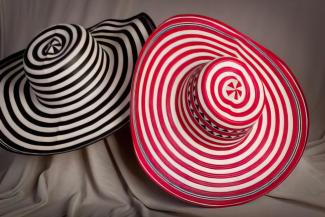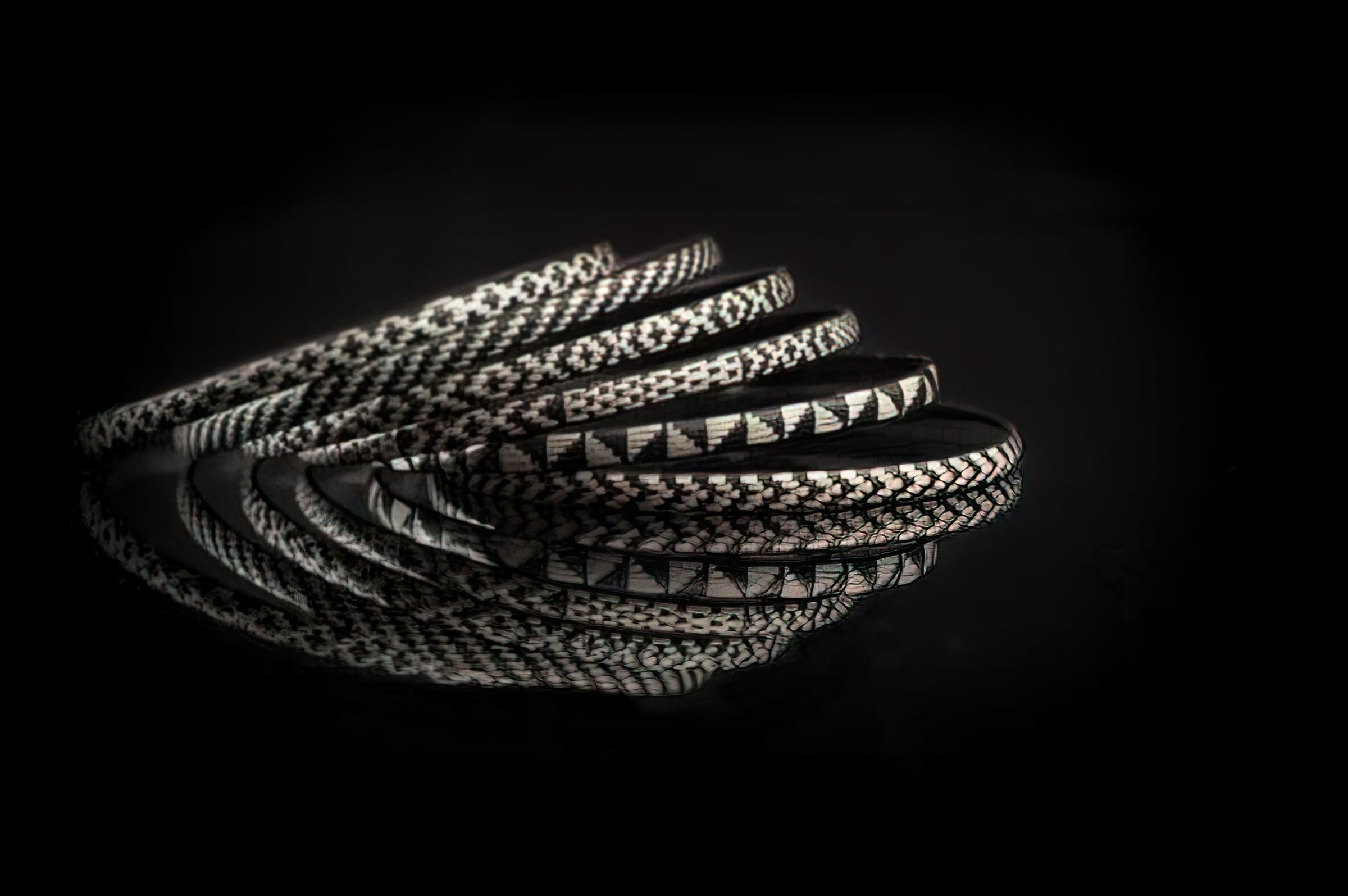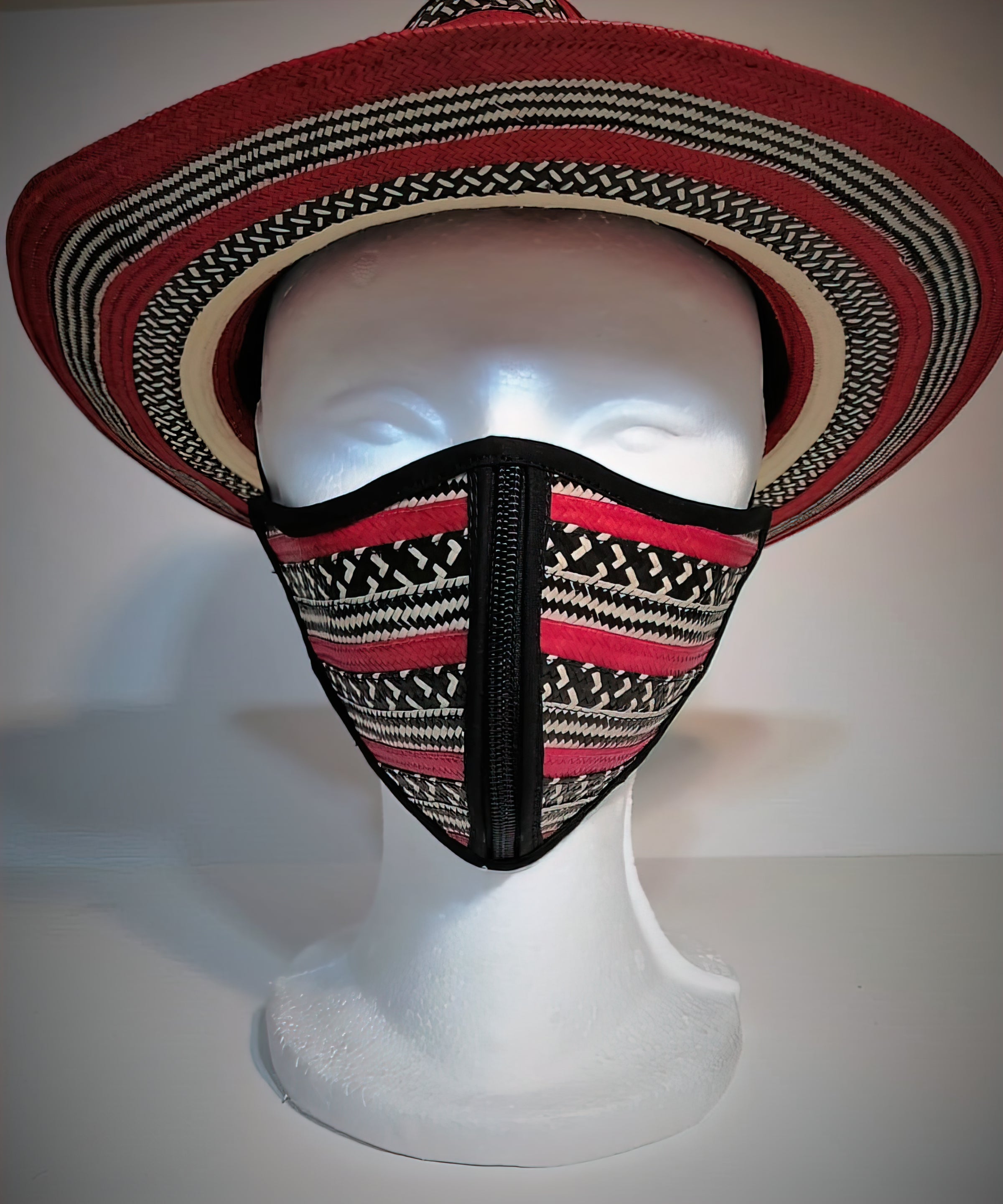
Over 20 years ago, Magno Caterino Mahecha Lopez (Panche) partnered with the community of Zenú artists in Colombia, including Reinel Mendoza Montalvo (Zenú) and Ana Mariana Flores Mendoza (Zenú), to transform their stunning caña flecha (arrow cane) weavings from one-dimensional objects of beauty into three-dimensional accessories such as hats, bags, and jewelry. Of the collaboration, Lopez says, “my main job is not to sell handicrafts, it is to make the communities visible. The recognition of their existence is the basis of future respect for their life and ancestral knowledge.” The Finatur Design cooperative now features 200 caña flecha artists.
Prior to collaborating as a cooperative, Montalvo remembers starting to make art with his parents at 10 years old and learning so much from them. By age 10, Mendoza, on the other hand, considered herself already well-versed, having been making many things by hand from a very young age. For Montalvo, hats were his family’s mainstay, but in the 1970s and 80s they were focused on being the forerunner in making new products only for men. He found that when they started to design items for women as well, their business really expanded both nationally and internationally. This was all before they were part of the cooperative, which is to say that there is a great deal of history and decades of skill in the hands of the artists contributing to Finatur Designs.

Lopez describes how the artists work with caña flecha: “From the long leaves of the arrow cane, the "ber that contains the central vein of the leaf is extracted by hand. This fiber is washed with other plants and dried and divided into strips. These strips can be stained and colored with many local plants, for example, leaves, roots, mud and clays, seeds, and powdered minerals, using chemicals for the brightest colors. After being dyed, the fibers are woven in pairs. The highest quality [has the highest number of strands].”
For Montalvo, these materials are familiar; he has been working with them daily for decades. “I feel very happy [and] so proud making so many beautiful things that represent us in the Zenú Indigenous community, the department of Colombia, and on an international level,” he says. “It is such a source of pride to be worthy of this beautiful culture.” Mendoza shares similar sentiments: “Working with the wild cane material in my hands is something that motivates [me], because it’s an inspiration for which I work every day. Also, I feel full of happiness and satisfaction.”

Mendoza says she finds the weaving process easy because the material is close by, and she’s been doing it since she was so young that it feels like second nature. She is thankful to previous generations for showing her how to weave when she was so young, and feels that inheriting the skill at such a young age is very helpful and ensures the style is not forgotten. Although the process is difficult, like Mendoza, Montalvo finds it easy due to repetitive practice and all of the natural materials (cane fiber, roots, and leaves) being available on the land where their community lives.
While the hardship of weaving and processing natural materials lessens with practice, daily life remains a challenge for the Zenú community. Montalvo and Mendoza name poverty, violence, drugs, and lack of access to education and sports, as well as the displacement of youth due to a lack of job opportunities as primary obstacles. Lopez, Mendoza, Montalvo, and the other artists bring the beauty and challenges of the Zenú community to the global stage through their stunning woven accessories. As Finatur Design, they make the Zenú community visible, and in doing so, to celebrate their culture and reduce hardship.
All in-person Cultural Survival Bazaars in 2021 are postponed due to the COVID-19 pandemic. To support and buy directly from our Bazaar artists, visit our directory of artists at bazaar.cs.org.
Top Photo: Zenú vueltiao hats woven made of arrow cane were used in Disney’s latest animated feature film, “Encanto.” All photos courtesy of Finatur Design.
